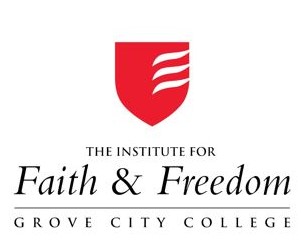They conflict, but they’re both OK: Profanity on Twitter–and Hyper-Sensitivity to “Triggers” –By Diane Medved

Trigger Warning: this column contains controversial subject matter.
We’re immersed in a perplexing contradiction in standards, and nobody’s noticing—yet. On the one hand, we accept wildly graphic depictions in news and entertainment (e.g. gory murders in films like Tarantino’s “Once Upon a Time in Hollywood”) and on the other, we insist on extreme sensitivity in what we see and hear, shouting strident accusations of “shaming” and “triggering” if something could offend or cause pain.
The rules collide: Say what you really mean, but you can’t say anything that could hurt my feelings.
And don’t say it in a way that upsets me, either, even if you justify your language as being “authentic” or “natural.” This is a change that is becoming ever-more intense.
We look to MPAA ratings of movies to alert us to unsuitable words or content from which we want to protect children, a noble cause. I argue in Saving Childhood: Protecting Our Children from the National Assault on Innocence, co-authored with my husband Michael Medved, that shielding youngsters from harsh realities allows them the privilege of a carefree period of development. Early stress or trauma can morph into debilitating fears, in childhood or later. Most parents intuitively understand that their children’s naiveté is precious and short-lived, and prefer to guard that period rather than subject their offspring to the cruelties and pressures of the larger world before it’s necessary.
But sparing anyone’s psyche from others’ trials and trauma is getting more and more difficult to do.
As a psychologist, I take note of news that relates to human interaction and sensitivity, and lately such issues have crowded headlines more and more–even as the news itself shows more gore, and repeats more epithets than ever. Were mine the only eyebrows raised reading a New York Times Style article that tossed in a casual quote about a male fashion icon’s “s—t”? I used hyphens. The Times did not.
The response in favor of “bare-all” is that delicacy keeps the truth from consumers. If a murderer creates a grisly scene of blood and death, the public deserves explicit coverage. If terrorist slaughter, a devastating tsunami or a catastrophic conflagration leave heart-wrenching remains, then readers have a right to see it.
Unless it causes distress, say opponents. I’m old enough to remember the days when the word “trigger,” used as a noun, meant the finger lever that activates a firearm. Now, it signals an image, idea or term that produces a negative psychological reaction in its receiver. You can’t really say the speaker “causes” the reaction, because it’s the listener’s experience or condition that kicks in.
A story in USA Today (July 25, 2019) illustrated the passion with which implications of “shaming” can be resisted. A set of dishware sold at Macy’s, meant to light-heartedly help guide portion control, was noticed on Instagram by Alie Ward, who photographed them and asked on Twitter, “How can I get these plates from @Macys banned in all 50 states?” The dishes featured concentric circles indicating amounts of food, with various labels. The inner circle on one plate said “skinny jeans;” its larger circle was marked “favorite jeans,” while the outer circle, suggesting a full plate of food, was labeled “mom jeans.” A second plate in the photo showed the outer two circles, designated as “foodie” and finally, “food coma.”
Ms. Ward’s tweet received 31,000 likes, 3,700 retweets, and 2,900 comments, and resulted in the Pourtions brand dishware vanishing from Macy’s within hours. Interestingly, the following day, company president Mary Cassidy wrote reporters that “The response today has been overwhelmingly positive, including more interest in Pourtions & sales today than ever before.” A Facebook follow-up by USA Today reported that “Alie Ward said she was called names and told to lighten up…” So much for sensitivity and shaming.
Concern about how messages might be perceived increasingly has become an issue in academia. Certainly, reminders of war, abuse, or any serious trauma can cause intense suffering—that shouldn’t be dismissed. On the other hand, there’s a continuum of discomfort, and the universe of potential triggers is limitless. Still, many educators feel they ought to anticipate when subject matter might renew a student’s latent trauma.
Because of this, “trigger” has become an adjective to modify the word “warning,” as in the necessity to announce potentially pain-inducing content, so affected persons can prepare, or avoid what’s coming their way. But does it really protect psychologically vulnerable listeners?
No, not really. The one published journal article (March, 2019) that reports on “trigger warnings’” effectiveness found they have minimal impact. Researchers at the University of Waikato in New Zealand conducted a series of six experiments, assessing a total of 1,394 subjects. Some read a trigger warning before viewing a violent video or reading a graphic passage; others didn’t. All were measured for distress afterward—and all six studies showed that the warning made no difference in consumers’ emotional reactions. Also irrelevant was whether or not participants had a history of trauma. The researchers conclude that trigger warnings are “neither meaningfully helpful nor harmful.” Yet they’re now commonly accepted as a legitimate classroom request.
A survey of college teachers belonging to the Modern Language Association and the College Art Association found that “nearly half of respondents (45%) think trigger warnings have or will have a negative effect on classroom dynamics, and 62% think they have or will have a negative effect on academic freedom.”
This vigilant sensitivity has now permeated the culture more broadly, with all types of speakers curbing their messages lest some point trigger anxiety, or worse, is misconstrued as “hate.” It’s a peculiar conundrum to have some professors and pundits restraining or modifying, while others in media and politics loosen their language, unafraid to write or tweet insulting and profane messages previously considered unacceptable.
A May 19 New York Times print article this year about our nation’s most visible and influential individual, titled “The Profanity President: Trump’s Four-Letter Vocabulary,” catalogued the copious curse words spewed in a speech where fans “cheered and whooped and applauded.” The article notes the juxtaposition of an august newspaper publishing unvarnished quotes: “Even the New York Times, the so-called Gray Lady with all the news that’s fit to print, found it fit to print the B.S. word… 26 times since [the president’s inauguration]—not all in stories covering the president.” In the article, the f- and s-words were freely printed; it was unclear whether or not they were included in the count.
With newspapers now unafraid to print words they used to designate with just a first letter and hyphens—while at the same time touchiness about race and gender escalates, Americans are bombarded by these conflicting forces. And I submit that both extremes– hyper-sensitivity and lack of sensitivity and politeness– lower public and personal discourse. We need a correction in the trends in both directions—from the pendulum’s ends back toward the more considerate and moderate middle we used to have.
Isn’t the ideal in America to treat each person with respect, regardless of inborn characteristics, and under all circumstances? The correction is both global, in noting and combating contradictions in media, and personal, in our own behavior. Working as a society foremost toward consistent respect can temper the public name-calling on Twitter and other social media, and at the same time increase internal sensitivity. We can squelch the need for restrictive and cumbersome warnings and censorship by purposefully applying gentleness, kindness and thoughtful restraint. Don’t try to “push the envelope” in order just to be noticed.
Oh, and in your personal choices, consume less media; tune out the cacophony.






















